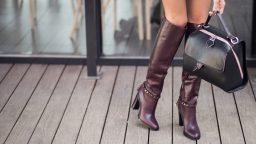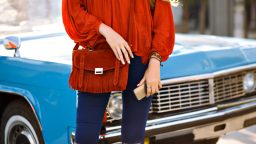Designer items are an investment in both style and quality, but with their high price tags, they’re also a target for counterfeiters. Fake designer goods are becoming more sophisticated, making it harder to spot a replica. However, there are still several key indicators that can help you differentiate between an authentic item and a counterfeit. Whether you’re buying a handbag, watch, or pair of shoes, here are some essential tips for spotting fake designer items.
- Check the Price
One of the most obvious signs of a fake designer item is its price. While we all love a good deal, if the price seems too good to be true, it probably is. Genuine designer goods rarely go on sale for more than 50% off, especially when they’re new or from a recent collection. Be cautious of items that are priced well below their retail value, as this is a major red flag.
However, this doesn’t mean you can’t find authentic designer items on sale—just make sure you’re buying from a reputable retailer or outlet store.
- Inspect the Quality of Materials
Authentic designer pieces are crafted from high-quality materials that feel luxurious to the touch. Whether it’s leather, fabric, or metal, counterfeit items often use inferior materials that don’t match the original’s craftsmanship.
For example, a real leather handbag will have a rich, supple texture that gets softer with use. Fake leather bags, on the other hand, often feel stiff, plasticky, or have an unpleasant smell. If the material doesn’t feel or smell right, there’s a good chance you’re dealing with a fake.
Similarly, designer watches or jewelry will have a solid weight to them and a fine finish. Lightweight, flimsy metals or poorly finished edges should raise suspicion.
- Examine the Stitching
Stitching is one of the easiest ways to spot a fake designer item. Authentic designer pieces are meticulously crafted, with even, consistent stitching. Look closely at the seams—real designer goods usually have flawless stitching that is perfectly straight and tight. The stitching should be uniform and usually done in a matching color, although in some cases, the contrast stitch is intentionally used as part of the design.
On fake items, the stitching can often be uneven, crooked, or even loose, and it may unravel over time. Pay attention to areas that require detailed work, such as around the zippers or edges of a bag or garment.
- Study the Logo and Branding
Designer logos and branding are often the first things counterfeiters try to replicate, but they’re also one of the easiest ways to spot a fake. Authentic designer logos will be clean, crisp, and perfectly aligned. They won’t appear blurry, off-center, or poorly printed.
For example, on designer handbags, the logo should be embossed or printed in a consistent, high-quality manner. On watches, the brand’s name or logo should be engraved or etched clearly and precisely. If you notice any irregularities, like misspelled names or misplaced letters, it’s likely a counterfeit.
- Look for the Authenticity Cards or Serial Numbers
Most luxury items come with authenticity cards, serial numbers, or hologram stickers that prove their authenticity. Designer handbags, for example, often have a serial number or authenticity tag hidden inside the lining. This is especially common in brands like Louis Vuitton, Gucci, and Prada.
While serial numbers can be difficult to verify, you can cross-reference the number with the brand’s official records or authorized resellers. Be aware that counterfeiters often replicate these numbers, but they won’t always match the brand’s database.
Make sure to check for an authenticity card as well, as many designer items come with a card or certificate of authenticity. If this is missing or looks cheap or poorly printed, you might be dealing with a fake.
- Analyze the Overall Shape and Design
Designer items are created with great attention to detail and are designed to be timeless. A genuine designer bag, dress, or pair of shoes will have a well-thought-out, consistent shape. Counterfeit items often have awkward proportions or irregular shapes, such as a bag that looks too wide or shoes with a mismatched heel height.
For example, designer handbags often have a structured shape that holds its form even when empty. Fake bags may appear too floppy or lack structure. Similarly, designer shoes will usually have perfectly symmetrical lines, and the heel height will be uniform. Counterfeit shoes may have ill-fitting heels or appear slightly uneven.
- Research the Seller’s Reputation
Where you buy the item plays a huge role in its authenticity. Always purchase designer items from reputable retailers, authorized boutiques, or established second-hand sellers. If you’re buying from an online marketplace like eBay, Poshmark, or Depop, take the time to check the seller’s ratings and reviews.
It’s important to be wary of sellers that do not offer any return policy or whose listings contain vague or incomplete descriptions. Reputable sellers should be able to provide high-quality photos, answer your questions, and offer a clear history of the item. Avoid buying from untrustworthy or unknown sources, as they are more likely to sell counterfeit products.
- Pay Attention to the Packaging
Authentic designer items usually come in high-quality packaging, such as sturdy dust bags, boxes, or wrapping. The packaging is just as much a part of the luxury experience as the product itself, and it will reflect the brand’s attention to detail.
If the packaging is flimsy, poorly printed, or missing altogether, this could indicate that the item is fake. Most counterfeit goods will come in subpar packaging that doesn’t match the level of craftsmanship found in the item itself.
- Trust Your Instincts
Finally, trust your instincts. If something feels off or doesn’t seem right, it’s worth taking a step back and re-evaluating the item. Counterfeit items may look good at first glance, but when you examine them closely, the flaws become apparent.
It’s always better to spend a little extra time investigating an item or asking questions than to rush into a purchase and regret it later. If something doesn’t feel right, take your time to verify the authenticity and, if possible, seek out the opinion of an expert.
Conclusion
Spotting fake designer items can be challenging, but with a keen eye for detail and knowledge of what to look for, you can avoid falling victim to counterfeit products. Pay attention to the price, materials, stitching, logo, and packaging, and always buy from trusted sources. If you’re ever in doubt, don’t hesitate to ask for further verification or proof of authenticity. With these tips, you’ll be well-equipped to distinguish between genuine designer pieces and knockoffs, ensuring that your investment is worthwhile.





